Photo
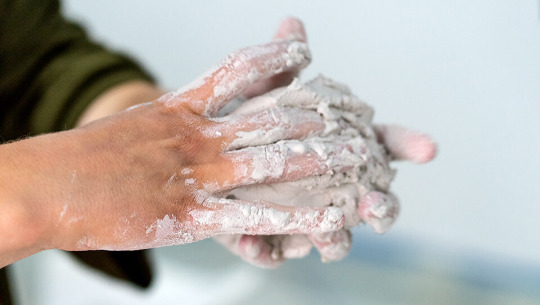
DI PIETRE E MANI
Workshop
A Cielo Aperto, Associazione Culturale Vincenzo De Luca
curated by Bianco-Valente e Pasquale Campanella
Latronico, 2020
http://www.associazionevincenzodeluca.com/progetti/Fonte_Poe/dipietreemani.htm


0 notes
Photo
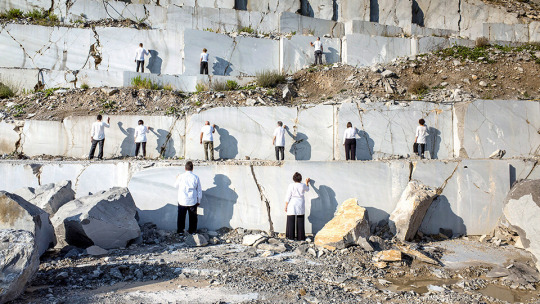
TIME PIECE
video 4:33 min
Participants: Mary Baldassarre, Giuseppe Benigno, pasquale Campanella, Adele De Luca, Rita De Luca, Giuseppe Giacoia, Patrizia Lofrano, Giuseppe Morgiello, Egidio Pecoraro, Federica Pecoraro, Francesco Puppo
2020
vimeo
1 note
·
View note
Photo
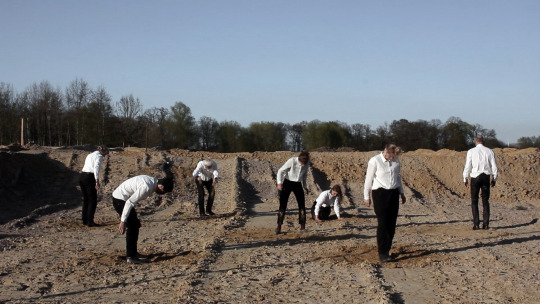
THE TRIAL LOOP
video 4:24 min
with: Antonia Grief, Andrzej Grzegorzewski, Teresa Häußler, Christian M. Leon, Lothar Reichelt, Sabine Reichelt, Sabrina Warnk
2016
A group of people on a construction site digs out from the earth small wooden hoola hoops, attempts to exercise with them and eventually buries them back. The action takes place in the north of Germany.
The trial loop is a symbolic exercise of confrontation/coming to terms with the collective and personal past. It alludes to the trial and error methodology in which a solution is searched by repetitive attempts continued until success, or until the stop of trying.
Reflecting upon personal and collective space, whether mental or physical, the action is carried out in a group but within predetermined boundaries which are being sounded again and again
While trying to use the tool the participants were asked to think about issues which they consider unresolved. As they report however, their attention faded very soon, shifting to the mechanical repetition of mere movement.

vimeo
email | fontepoe(at)gmail.com | for password
#thetrialloop#fonte&poe#fonte & poe#alessandrofonte#shawnettepoe#alessandro#fonte#shawnette#poe#performance#art#hulahoop#germany#works
0 notes
Photo

CLAIM
video 2:42 min
with: Ambra Abbaticola, Paola Ciriello, Rocco De Benedictis, Daniela Giglio, Valentina Iacovelli, Luigi Iovane, Petr Košárek, Matteo Lorusso, Ignazio Fabio Mazzola, Tina Sibilia, Fonte Maria Sibilia, Edoardo Trisciuzzi, Nicola Zito
2015
realized during the residency SAC | Mari tra le mura
a project by Fondazione Pino Pascali - Polignano a Mare
A group of people imitates the sound of cicadas among the ruins of an abandoned Romanic church. The action takes place in the south of Italy in early autumn.
The action affirms the right to frivolousness while being also an expression of nostalgia and decadence. It investigates the question of the southern identity through the stereotype of a picturesque rurality. The choir’s claim oscillates between the evocation of lightness and the attempt to connect with nature, the landscape and the once sacred place, turning the ruins inside out. In the classical symbology the cicadas represent the ambiguous balance between serenity and recklessness, joy and negligence. They are the light-headed attribute of the God Apollo. Their uninterrupted mantra turns them often into a symbol of immortality.
The imitation of the insects suggests their possible disappearance or extinction, turning the action into an idea of a future tradition rendering homage to their existence.Further the cicadas in the southern setting allude to Ingeborg Bachmann’s “Die Zikaden”* which traces an idea of the south as an apparently perfect escape from reality and turns them into a metaphor of humans who flee from life.
*Denn die Zikaden waren einmal Menschen. Sie hörten auf zu essen, zu trinken und zu lieben, um immerfort singen zu können. Auf der Flucht in den Gesang wurden sie dürrer und kleiner, und nun singen sie, an ihre Sehnsucht verloren - verzaubert, aber auch verdammt, weil ihre Stimmen unmenschlich geworden sind. (Ingeborg Bachmann)


vimeo
email | fontepoe(at)gmail.com | for password
#fontepoe#fonte&poe#alessandro fonte#shawnette poe#claim#fondazione pino pascali#sac#works#video#actions#performance
0 notes
Photo
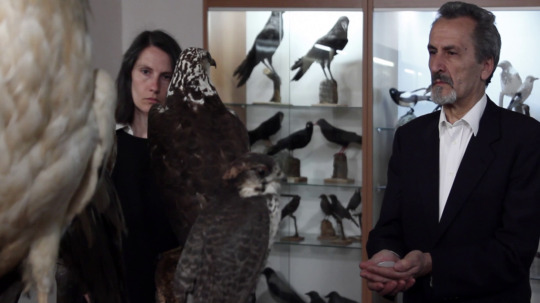
LA GIOSTRA DELL’ AVVICINAMENTO [ THE CAROUSEL OF APPROACHMENT ]
RITUAL FOR 8 PEOPLE AND 8 TAXIDERMIED BIRDS OF PREY
participants: Laetitia Bourget, Giuseppe Carrozza, Antonio Castiglia, Mario Cicero, Annalisa Genchi, Roberto Mazzola, Valentina Minutella, Stefania Sperandeo
birds: Gyps Fulvus, Falco Tinnunculus Tinnunculus, Milvus Milvus, Pernis Apivorus, Neophron Percnopterus, Falco Biarmicus, Tyto Alba Alba, Falco Subbuteo (from the collection of the Museum Francesco Minà Palumbo - Castelbuono)
video, 10:00 min
2015
video performance developed during an art residency in Castelbuono (Sicily)
The action has the character of a secular ritual: 8 mounted raptors from the Madonie, belonging to the collection of the Naturalistic Museum Minà-Palumbo (Castelbuono), are exposed on an altar-like pedestal within the museum space. Around the altar, forming the vertices of an almost imperceptible octagon, stand 8 individuals, also them from the zone of the Madonie, staring constantly into the birds’ glass eyes. One of them keeps an egg of ice in the hands for as long as the cold is bearable and then passes it on to who stands next. The action continues until the egg melts completely.
Being made of water, the egg’s dissolution is announced, foreseeable, the attempt of keeping it is not comfortable. In most cultures and ever since the humans have been borrowing the egg from other species to symbolize birth. The work explores the connection between birth and the passing of time, the search for comprehension between humans and animals, pointing out their — in terms of power — so unbalanced relation. Further it alludes to the ever ambiguous relation between religion and science, their commonalities as well as their insurmountable differences. One accepts the transcendental on the basis of faith the other pursues the aim of understanding it by means of research. The work recalls a certain parallelism between embalming and freezing of specimen for scientific purposes and the conservation of religious relics — such as the skull of S. Anna exhibited in an homonymous chapel in Castelbuono.
Eventually it confronts the significance that the quadrature of the circle assumes in mathematical-scientific terms with the magical-religious symbolism where the transition from square (earthly/mundane) to circular (transcendental) is being represented by the octagon. This geometrical/symbolic relation is a recurrent architectural theme and is very present also in the historical buildings of the town of Castelbuono such as the original hidden chapel of St. Anna.
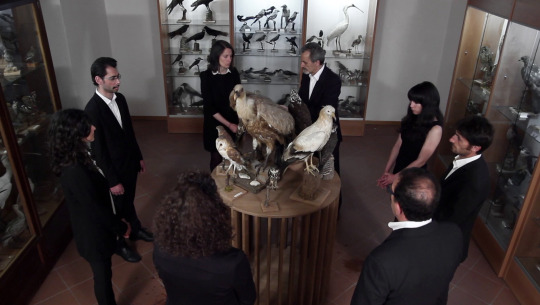
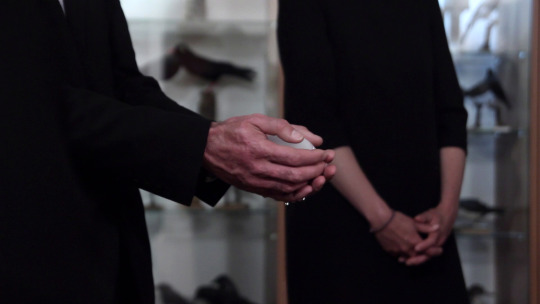

vimeo
email | fontepoe(at)gmail.com | for password
a video by Fonte&Poe
with: Laetitia Bourget, Giuseppe Carrozza, Antonio Castiglia, Mario Cicero, Annalisa Genchi, Roberto Mazzola, Valentina Minutella, Stefania Sperandeo
Gyps Fulvus, Falco Tinnunculus Tinnunculus, Milvus Milvus, Pernis Apivorus, Neophron Percnopterus, Falco Biarmicus, Tyto Alba Alba, Falco Subbuteo
(from the collection of the Museum Francesco Minà Palumbo - Castelbuono)
cinematography, editing, audio: Alessandro Fonte and Shawnette Poe
camera: Alessandro Fonte
ice eggs realized by Fiasconaro - Castelbuono (PA)
carpenter: Alessandro Vignieri
responsible for the taxidermied birds of prey: Franco Toscano
A project realized during the art residency iART
curated by CLAC
in collaboration with:
Municipality of Castelbuono
Museo Civico di Castelbuono
Museo Naturalistico Francesco Minà Palumbo
Shot at Museo Naturalistico Francesco Minà Palumbo - Catelbuono
in April 2015
special thanks to all the participants and to whom made this project possible:
Laura Barreca, Valentina Bruschi, Angela Sottile, the board and the staff of the Museo Civico / Rosario Schicchi, Franco Toscano, Giuseppe Piro, and the Museo Naturalistico Francesco Minà Palumbo / Mario Cicero / Fausto, Mario and the patisserie Fiasconaro / the Municipality of Castelbuono / the staff of the city library of Castelbuono / CLAC and i ART /
and again thanks for the technical support to: Cristina Alga / Valentina Minutella / Gabriele Gismondi / Ruggero Di Maggio
© Alessandro Fonte, Shawnette Poe - 2015
0 notes
Photo

THE REBOOTS
www.thereboots.tumblr.com
#thereboots#design#objects#alessandrofonte#shawnettepoe#reboots#fontepoe#21triennale#bio50#adhocracy
0 notes
Photo
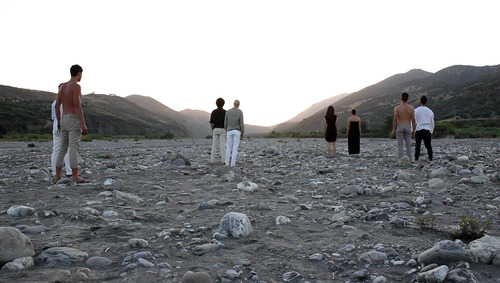
DRY OR DROWN
performers: Diego Barone, Vincenzo Barone, Antonio Cerchiara, Pierfranco Lucente, Paola Marino, Claudia Oriolo, Valerio Ruscelli, Yukiko Saito, Emanuele Serrano
video, 05:15 min
2014
A group of people walk down the semi-dried bed of a river, against the stream, while rhythmically beating stones and wood sticks until they encounter an instructor who guides them in a silent exercise until the dusk. The action takes the form of an atemporal ritual linked to the mythology of the waters whose presence, abundance, inconstancy and risk have traced the history of the whole territory since the time of the first Greek settlements. Water was the subject of the birth and the decline of Sybaris whose ruins are now being kept dry with constant effort. Further it was the subject of sacred offerings to the goddess Athena. Despite the importance of the relationship between the Greeks and the waters however there is no significant evidence relating to the practice of swimming. “Dry or drown” establishes a connection between place, past and present, blurring the boundaries, ranging from performance action and cinematic image, sacred ritual and athletic exercise, Greek mythology and the contemporary sensation of ubiquitous emergency.
site-specific video realized during the residency Témenos in Sibari (Italy)
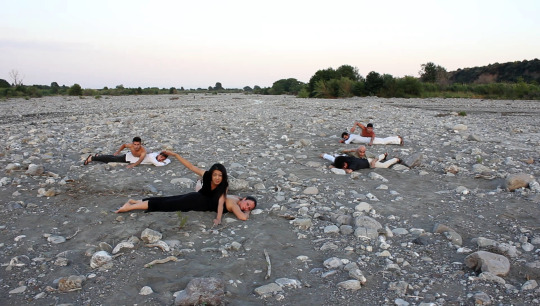
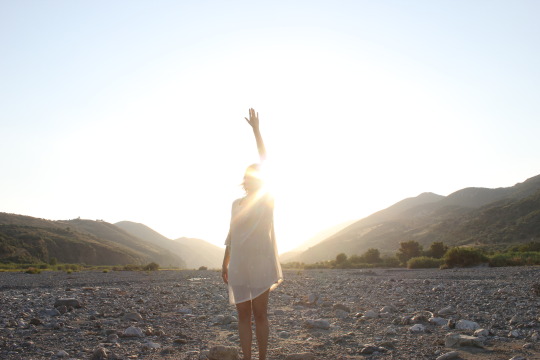
vimeo
email | [email protected] | for password
1 note
·
View note
Photo
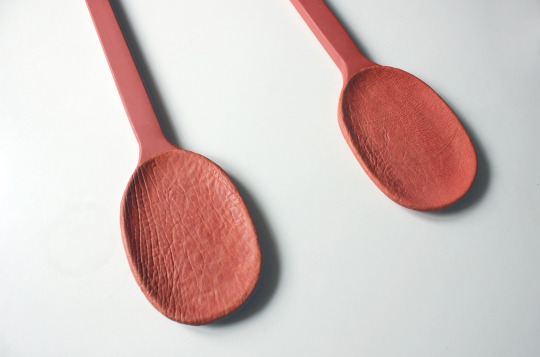
THE MEASURE OF EXPECTATIONS
materials: wood, leather
(78 x 11cm)
2014
what do we have?
what do we offer?
what do we ask for?
what do we take?
what do we deserve?
what do we expect?
what do we expect back?
what do we thank for?
what do we reproach for?
what is our fault?
what is not?
who is responsable?
who can explain?
who deserves the disrespect?
who has got the remedy?
who deserves one?
who will invent one?
what is a joke?
what is for real?
who feeds whom? when? what for?
how do we react?
what do we fight (for)?
what do we accept? why? how long?
in which position?

0 notes
Photo

PLAY TABLE
materials: wood
dimensions: 250x110x110 cm
2015
In order to function, the device takes two people. Further it allows just one of the two players to be sitting at the height required to use the table. The “successful” user however is bound to the losing one. A position of equilibrium between the two parties is only possible if both renounce to the comfort /using the table in an appropriate manner.
The uninterrupted struggle for balance is shaping the human history ever since. As Marx and Engels stated in their manifesto this fight leads to a revolutionary transformation or to the ruin of both parts involved. For one part to succeed it is necessary a second one to succumb, an equilibrium seems impossible.
0 notes
Photo
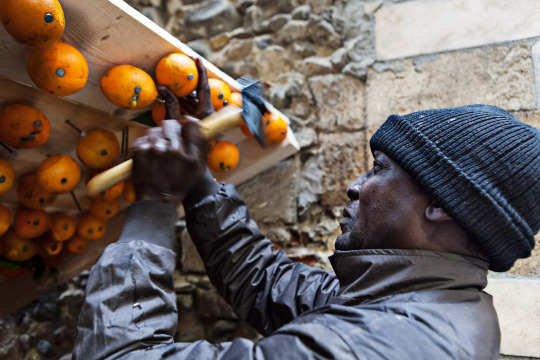
REVERSE
performer: Abou-Fousseni Kpekpassi, Abdou Salam Maifada
materials: 200 kg of oranges, 2 hammers, nails, wooden roof
.
2012
.
link to all the contents about REVERSE
.
[eng]
Fonte and Poe lead an action inspired by the precarious condition of workers in Calabria. Two immigrants, recruited by the artists in the manner of “bosses” that daily decide who will work and who will not, nail kilos of oranges on a wooden board placed in a small lane in the historic center of Cosenza. Oranges become the ‘martyred’ fruit and the critical object of their intense performative gesture, to reflect on the contradictions and waste that regulate the complex macro-economic system.
(VIVA | Performance Lab)
.
[ita]
Fonte e Poe conducono un’azione ispirata alla condizione precaria dei lavoratori sul territorio calabrese. Due immigrati, reclutati dagli artisti alla maniera dei “caporali” che ogni giorno decidono chi far lavorare e chi no, inchiodano chili di arance su una tavola di legno posizionata in un vicolo del centro storico di Cosenza. Le arance divengono il frutto ‘martoriato’ e l’oggetto critico del loro intenso gesto performativo, per riflettere sulle contraddizioni e gli sprechi che regolano il complesso sistema macro-economico.
(VIVA | Performance Lab)
.
vimeo

foto: OKNO STUDIO PHOTOGRAPHY
VIVA Performance Lab
curated by Tania Bruguera and Cristiana Perrella
produced by MAXXI Museum - Rome
artists:
FRANCO ARIAUDO, TANIA BRUGUERA, CALORI & MAILLARD, DIEGO CIBELLI, MINERVA CUEVAS, FONTE & POE, FRANCESCA GRILLI, NURIA GUELL, ANIBAL LOPEZ, MARAM, YOSHUA OKON, ADRIAN PACI, IOANA PAUN, CESARE PIETROIUSTI, LUCA PUCCI, LEONARDO ZACCONE
Watch the documentary by Alessandra Galletta\LAGALLA23 productions, Milano.
youtube
0 notes
Photo

SPLIT/ ME/ RESONANCE
site specific installation and performance for the Chiostro del Bramante - Roma
in collaboration with the director Fabio Rao
performer: Elisabeth Kaiser
materials: 200 kg di travertine, iron well, water, projection
2012
youtube
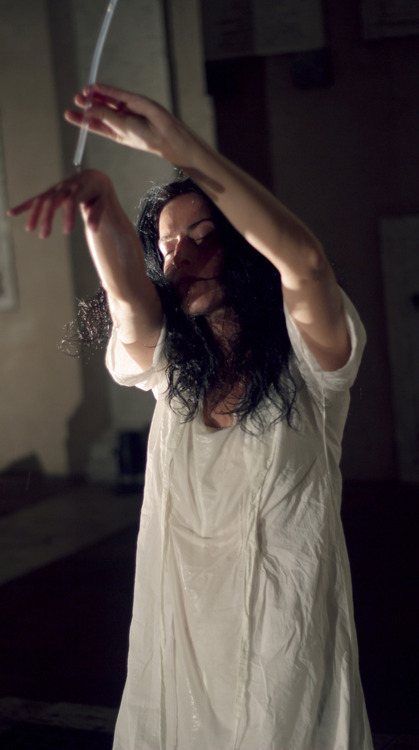
[eng]
Split/Me/Resonance/ reflects on the ability of a projective conquest of the self, showing the repeated failure of the action heading for that aim.
The construction of the performance is based on the perfectly symmetrical architecture of the Bramante cloister in Rome, characterized by two diagonals of travertine. One of those, exploded by the distribution of sharp travertine fragments on the pavement becomes the path of the action.
At its beginning a tube drops water from above. The performer fills her mouth with water before making herself on the way in an attempt to join her virtual double, set at the end of the diagonal: a video projection of herself in the act of diving and emerging in and out of the water of a well. The painful contact between the naked feet and the stones is simultaneously being translated into sound by the performer, leading to a consequent loss of the water gathered in her mouth and forcing her to return to the starting point, tracing thus a most probable failure of completion.
“The inability to look contemporarily at the immanent and transcendent aspect of the phenomena however makes it possible to reconfigure a balance - even if exhausted and broken - between the tendency to the sinking (which is a loss of self and gain of an origin) and the senselessness of a mute song (because it does not need a dialogue from a distance - like the child in the prenatal state or in an ideal state and because the conjunction is unnecessary).” [Ada Biafore]
[ita]
"La rifrazione spezzata di un doppio impossibile a ricongiungersi fa risuonare il Chiostro del Bramante in Split/ Me/ Resonance. Lo spazio - perfettamente simmetrico - del Chiostro si condensa intorno a una delle due diagonali in marmo travertino che ne scandiscono la pavimentazione, per tracciare il tempo – ordito da Alessandro Fonte, Shawnette Poe e Fabio Rao, autori dell’installazione e agito da Elisabeth Kaiser, la performer – di un attraversamento.
Elisabeth viene introdotta (consegnata? accompagnata?) al gioco della conquistra proiettiva di sé (o della sua immagine? o di quella immagine che lei è?) da un agente esterno, un gruppo di persone che le levano il cappuccio e la abbandonano intenzionalmente allo spazio della sua azione - una situazione generata da elementi mai visti prima e con cui dovrà confrontarsi per la prima volta - oscillando continuamente, da questo momento in poi, tra intenzionalità e passione, tensione e abbandono.
Il primo gesto, quasi un riflesso condizionato, la porterà verso il punto di partenza, sotto una fonte che stilla acqua, ma non ad abbeverarsi: piuttosto a raccogliere, goccia a goccia, quanta più acqua possibile. Con la bocca piena tenterà di dirigersi attraverso la diagonale di marmo- resa accidentata dall’emersione dei frantumi acuminati del travertino – verso l’unico esito possibile della sua azione: il pozzo che sprofonda la base del Chiostro, per guardare o per raggiungere il suo doppio, che si immerge e riemerge dall’acqua tradendo la naturale logica corporea.
L’immagine proiettata (nel senso etimologico del termine: gettatare in avanti, verso) infatti sembra soffocare al contatto con l’aria, mentre si muove senza sforzo quando è immersa nell’acqua, come se questo elemento le fosse familiare: allo stesso modo la donna reale che le va incontro - la Elisabeth in carne e ossa – cerca di trattenere a sé l’acqua che ha raccolto, ma la durezza e le ascosità delle pietre che è costretta a calpestare la costringono all’emissione di suoni. A cantare - reazione inevitabile - un canto che che le fa perdere l’acqua custodita in bocca e che la induce a tornare indietro, a raccoglierne ancora, a tentare reiterativamente il successo della sua azione impossibile.
Il canto tuttavia si disarticola sotto la pressione del corpo e tutto quello che resta da fare è abbandonarsi al suolo.
L’Elisabeth impossibile – quell’unione che la donna reale non riuscirà mai a trovarsi tale- è simile a uno spirito elementare – un ibrido di corpo e spirito, una figura liminare, che tradisce la possibilità di ritrovare in sé stessa la sopravvivenza dell’origine o un rimando archetipico, poiché – come le ninfe rintracciate da Agamben nella storia delle immagini – nei sembianti in cui viene restituita non c’è distinzione tra originale e copia.
Nessuna delle Elisabeth che vediamo è l’originale, nessuna è soltanto una copia: si tratta piuttosto di un “indiscernibile di originarietà e ripetizione”, del risultato residuale del tentativo di mostrare insieme interiorità ed esteriorità - immanenza e trascendenza – di indicare, mediante una rappresentazione, un punto cieco (che potrebbe generare l’immagine oppure esserne il risultato).
In cosa consiste quell’al di là del limite? Cosa hanno fatto quelli che l’hanno gettata qui dentro (o lì fuori)? Hanno aperto una piaga o dischiuso una soglia?
Allo spettatore, tutta la scena sembra esibire l’opportunità di pensare insieme l’armonia o la bellezza da una parte e l’effrazione e la violenza dall’altra, esibendone la possibilità logica ed affermando – nello stesso momento – la impossibilità di potere raggiungere mai questa unione.
La sembianza reale della donna, stremata, che si getta a terra, sembra invece dirci: è un al di là verso cui l’immagine è fatalmente attratta, correndo però il rischio di cadere, perdersi, pietrificarsi. Al soggetto sembra precluso l’accesso a quell’al di là, pena la frustrazione, lo scacco.
Eppure, se il sembiante cade, rimane la donna: quell’eccesso di zoè – il doppio speculare in acqua (che sia un riflesso di uno stato prenatale o la prefigurazione di una armonia) – ci dice invece, con la sua persistenza perturbante, che quell’al di là non è altro che l’esito possibile di una immagine.
Le immagini di cui è fatta la nostra memoria tendono incessantemente nel corso del tempo, attraverso le vicende della loro trasmissione storica (collettiva e individuale) a irrigidirsi, trasformandosi in spettri. Quello che è in questione è quindi la possibilità di ridare vita alle immagini. Annullando il doppio mediante l’esibizione della sua la finzionalità e riconfigurando così un equilibrio– pure se stremato, interrotto, frangente – tra la tensione all’inabissamento (più in giù fino al loro punto di origine) e quella – lirica e artistica – all’emergenza e all’esistenza paradossale di un appena esistente fantasmatico, una eco che si stacca dalla voce che l’ha originata - naturalmente incapace di dissolversi del tutto.” (A. Biafore)
0 notes
Photo

GRAZIE A TUTTI PER ESSERE GIUNTI COSì NUMEROSI /
THANK YOU ALL FOR COMING
materials: wood, mirror, acrlic color, neon
2010
0 notes
Photo
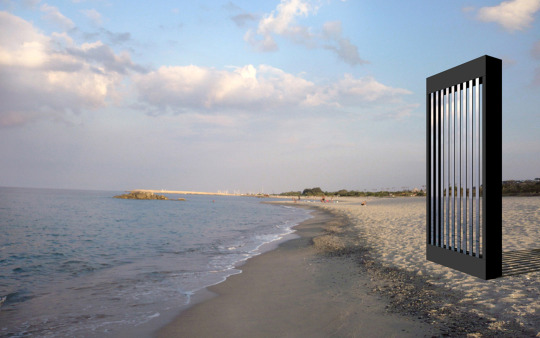
ORFEO'S SILENCE
site-specific installation
materials: wood, mirroring alluminium
2010
One moment and Orpheus turned to Eurydice
Breaking the pact and losing her forever
Has he ever been able to sing again afterwards?
Or even to say a word?
Has anyone heard again the sound of his lyre?
Didn’t loss, grief, guilt, and the irreversibility of his action close his
throat like a noose?
And that end, with women cutting him in pieces and throwing
his remains in the river… was it for his refusal to love them or for
having denied them his divine voice?
What remains today is his silence.
A door.
The idea of a limit to be crossed.
No need to look behind
But the urge to do so.
The Sea and the Sky, the same authorities beyond time which
witnessed the story of Orpheus are reflected on nine crystallized
strings of a lyre.
A mute instrument.
0 notes
